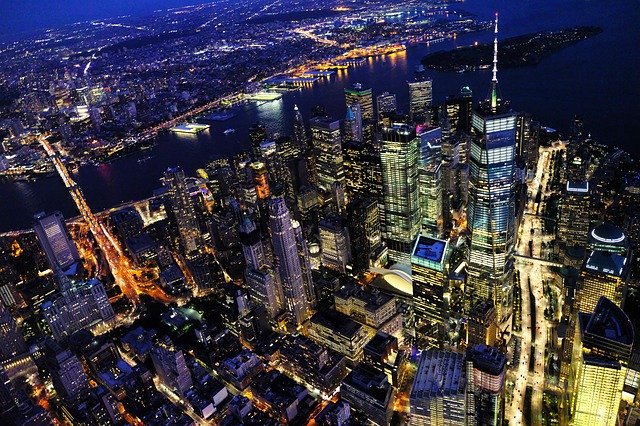In today’s fast-paced urban environment, focusing on wellness and integrating natural detoxification into infrastructure designs is more important than ever.
A healthier world begins with you. We need to create spaces that promote well-being while reducing the negative impact of city life on our bodies.
In this blog post, we will explore ways to integrate infrastructure with wellness, discuss various design elements that contribute to natural detoxification, examine real-life examples of successful projects, and draw conclusions for future steps towards a greener cityscape.
The Importance of Integrating Infrastructure and Wellness
Maintaining wellness, including the incorporation of beneficial components like reservatrol, is crucial for achieving a balanced and wholesome life amidst the hustle and bustle of urban living.
As city dwellers get increasingly engulfed in busy schedules filled with work pressure, inadequate sleep patterns, sedentary lifestyles, and exposure to pollution, there is an urgent need for designs that help counterbalance these factors.
The importance of integrating infrastructure with wellness lies in achieving harmony between the built environment and our physical well-being.By incorporating aspects that promote efficient circulation of clean air, proper waste management systems.
Noise reduction measures, increased green areas within urban settings, combined with cleverly designed walkways, can significantly enhance overall health conditions in cities around the globe.
Natural Detoxification: The Key to Wellness in Urban Spaces
Emphasizing natural detoxification is vital when pondering wellness within metropolitan environments. Urban areas are infamous for substantial pollution
intensity and poor air quality, stressors that can impose severe damage on our overall health and physical wellbeing.Securing authentic natural detoxification amid a city’s hustle and bustle might appear improbable, however, it’s conceivable through the integration of intelligent strategies.
These include enhancing greenery by planting more trees, minimizing motorized vehicle use, endorsing pedestrian and cycling activities via carefully-designed infrastructure, and forming municipality-wide systems for waste handling (inclusive of recycling). In doing so, we can transform this aspiration into a reality.
Design Elements That Promote Natural Detoxification
Administering subtle yet effective design elements in your urban project could make all the difference. Here’s a look at some critical factors that promote natural detoxification:
Green Spaces
Green spaces not only enhance the aesthetic appeal of urban areas but serve various health benefits too. These sanctuaries help filter air pollutants, significantly improving overall air quality while acting as mini ecosystems that foster biodiversity.
Integrating green pathways into urban layouts also encourages residents to walk or cycle around within communities—a healthy habit that directly aids in their own natural detoxification process.
Natural Light and Ventilation
Ample natural light and ventilation work wonders for our well-being. Not only do these help regulate internal temperature and humidity levels, but they aid in reducing energy consumption used for artificial lighting and cooling systems.
Further integration into architectural designs would improve general health by providing suitable living conditions regardless of external climate conditions.
Bike Lanes and Pedestrian-Friendly Walkways
Promoting biking and walking through well-defined lanes is another practical step towards cleaner cities. Reduced reliance on cars means fewer exhaust emissions, thus improving air quality. Simultaneously, encouraging residents to adopt active modes of transportation contributes to their fitness and well-being.
Rooftop Gardens
Rooftop gardens are a game-changing addition to your urban wellness strategy that not only beautifies the concrete jungle but offers valuable environmental benefits.
They can help mitigate issues like urban heat islands while naturally filtering rainwater with their vegetation, thus preventing unnecessary runoff into sewage systems and waterways.
Real-Life Examples of Wellness-Enhancing Urban Development Projects
Inspiring examples from around the world showcase how practical and functional design approaches can be integrated seamlessly into our contemporary urban lifestyles:
The High Line in New York City
A model example of repurposed infrastructure, the High Line was once an abandoned stretch of elevated railway tracks. Today, it’s transformed into a lush, linear green space offering pathways for walkers and joggers.
The elevated walkway snakes through Manhattan’s West Side neighborhoods while various plant species purify the air.
As a public park designed explicitly for strolling and taking in the city views, paired with the advantages resveratrol provides for detoxification purposes acquired from nature.
The High Line promotes physical activity as well as mental relaxation for New Yorkers amidst an otherwise busy cityscape.
Namba Parks in Osaka, Japan
Namba Parks is an excellent example of blending retail spaces with natural landscapes. The shopping mall boasts terraces boasting botanical gardens where walkers can unwind in nature despite being at the heart of busy Osaka.
Through strategic urban planning and incorporation of green spaces within commercial structures, Namba Parks showcases how cities worldwide can prioritize wellness even while catering to consumer demands.
Conclusion
We now understand that integrating wellness and natural detoxification into urban planning is an essential step towards healthier communities. Whether we focus on increasing green spaces, designing with ample light and ventilation provisions or encouraging walking/cycling through infrastructure interventions, every effort counts in building the cities of the future. As individuals and decision-makers, it’s time we prioritize holistic well-being through considerate planning to create a sustainable and healthier living environment for all.




